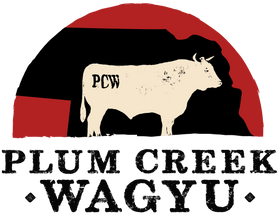The Wagyu Mythbusters: Separating Fact from Fiction
Introduction
Wagyu beef is surrounded by myths and misconceptions, from its origins to its grading and health benefits. Many believe that all Wagyu comes from Japan or that it's always exorbitantly priced. In this post, we’ll debunk the biggest Wagyu myths and set the record straight.
1. Myth: All Wagyu Beef Comes from Japan
Fact: While authentic Wagyu originated in Japan, high-quality Wagyu is also raised in the U.S., Australia, and other countries. American Wagyu, for instance, comes from Japanese Wagyu cattle crossbred with traditional American breeds, creating a unique but equally rich flavor profile.
2. Myth: Wagyu is Always Expensive
Fact: While A5 Japanese Wagyu can be costly, there are more affordable cuts and grades available. American Wagyu and different Wagyu hybrid cuts offer incredible quality at a lower price point, making it more accessible to a wider range of consumers.
3. Myth: More Marbling Means Better Wagyu
Fact: Marbling is a key characteristic of Wagyu, but higher marbling doesn’t always mean better taste. Some diners prefer slightly less marbled cuts for a more balanced texture and beefy flavor. The best cut depends on personal preference.
4. Myth: Wagyu is Unhealthy Due to Its Fat Content
Fact: Wagyu contains a high percentage of monounsaturated fats and omega-3s, which can be beneficial for heart health when consumed in moderation. Its unique fat composition makes it different from conventional beef.
5. Myth: You Must Cook Wagyu Like a Regular Steak
Fact: Wagyu’s high fat content means it requires different cooking techniques. Cooking it at lower temperatures and avoiding over-seasoning helps preserve its buttery texture and rich flavor.
6. Myth: Wagyu and Kobe Beef are the Same
Fact: Kobe beef is a specific type of Wagyu from the Hyogo Prefecture in Japan. While all Kobe is Wagyu, not all Wagyu is Kobe. The strict criteria for Kobe beef make it one of the most exclusive varieties in the world.
Conclusion
Understanding Wagyu beef beyond the myths helps consumers make informed choices. Whether you’re exploring different Wagyu origins or cooking it properly, knowing the facts ensures you get the best experience from this luxurious beef.
Related Posts
Winter Comfort Foods: Wagyu Beef Recipes to Warm You Up
From Ranch to Table: The Journey of Plum Creek Wagyu Beef
At Plum Creek Wagyu, we believe that the journey from ranch to table is just as important as the meal itself. Every cut of our premium Wagyu beef tells the story of hard work, dedication, and a commitment to quality. From the care we give to our cattle to the final delivery of fresh, marbled steaks, each step is a vital part of the process that guarantees a product like no other.
The Ultimate Guide to Cooking Wagyu Beef at Home
Plum Creek Wagyu Beef in the Nebraska Community: Supporting Local Connections with Every Cut
The Best Sides, Sauces, and Wines to Complement Your Meal
Wagyu and the Art of Plating: How to Make Your Meal Look (and Taste) Five-Star
When it comes to culinary experiences, few things can rival the decadence of Wagyu beef. Renowned for its rich marbling, unparalleled tenderness, and buttery flavor, Wagyu is often considered the pinnacle of luxury dining. However, enjoying Wagyu is not just about the taste—it's also about presentation. Let’s dive into how you can elevate your Wagyu dishes to five-star status with the art of plating.








